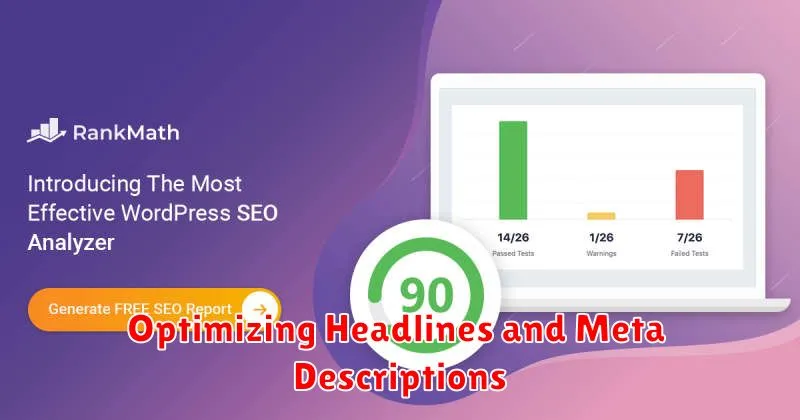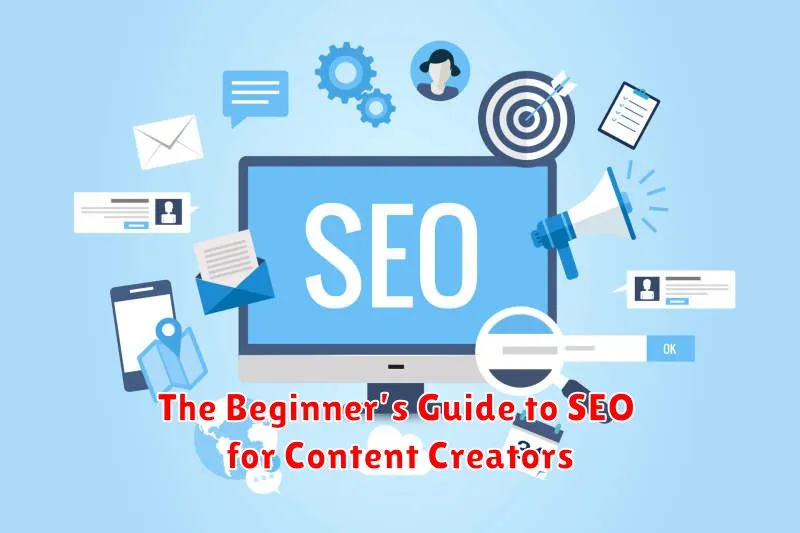Creating high-quality content is only half the battle in the digital world. To truly succeed as a content creator, you need to master the art of Search Engine Optimization (SEO). This beginner’s guide will provide a comprehensive overview of SEO fundamentals, equipping you with the essential knowledge and actionable strategies to optimize your content for search engines like Google. Whether you’re a blogger, vlogger, podcaster, or any other type of content creator, understanding SEO is crucial for expanding your reach, driving organic traffic to your content, and ultimately, achieving your online goals. This guide will cover everything from keyword research and on-page optimization to technical SEO and content promotion, empowering you to make your content discoverable by a wider audience.
In the competitive online landscape, understanding how search engines work is no longer optional; it’s a necessity. By implementing effective SEO strategies, you can significantly increase the visibility of your content. This beginner-friendly guide will demystify the sometimes complex world of SEO, providing you with practical tips and techniques to improve your search engine rankings. From understanding keyword research to mastering on-page and off-page optimization, this guide will empower you with the knowledge you need to attract more organic traffic, engage your target audience, and grow your online presence as a content creator.
Understanding How Search Engines Work
Search engines like Google, Bing, and Yahoo! help users find information on the web. They do this through three primary functions: crawling, indexing, and ranking.
Crawling is the process where search engines use bots (also known as “spiders”) to discover new and updated web pages. These bots follow links from one page to another, building a massive index of the web.
Indexing is where the discovered information is organized. Search engines store data about each page, such as the words on the page, the title tags, and other relevant information. This indexed information is then used to retrieve relevant results for user queries.
Ranking is the final step, where the search engine determines which pages are most relevant to a user’s search. Complex algorithms analyze numerous factors to determine the order in which pages are displayed in the search results. These factors include keyword relevance, page authority, user experience, and more.
Keyword Research Essentials

Keyword research is the foundation of a successful SEO strategy. It involves identifying the terms people use when searching for information related to your content. Understanding these search terms allows you to tailor your content to match user intent and improve your visibility in search engine results.
Effective keyword research involves several key steps:
- Brainstorming Seed Keywords: Start with broad terms related to your topic. For example, if you’re creating content about baking, seed keywords might include “baking recipes,” “cake recipes,” or “bread baking.”
- Using Keyword Research Tools: Utilize tools like Semrush, Ahrefs, or even free tools like Google Keyword Planner to expand your list and discover related keywords. Look for variations, long-tail keywords (longer, more specific phrases), and related terms.
- Analyzing Keyword Metrics: Pay attention to metrics like search volume (how often a keyword is searched) and keyword difficulty (how competitive it is to rank for a specific keyword). Target keywords with a balance of decent search volume and manageable difficulty.
- Understanding Search Intent: Consider why someone is searching for a particular keyword. Are they looking for information, a product to buy, or a specific location? Aligning your content with search intent is crucial for ranking well.
Optimizing Headlines and Meta Descriptions

Headlines and meta descriptions are crucial elements for attracting clicks from search engine results pages (SERPs). A compelling headline grabs attention and entices users to click through to your content. An effective meta description provides a concise summary of your content, further encouraging clicks.
When crafting your headlines, incorporate relevant keywords that accurately reflect the topic of your content. Keep headlines concise and to the point, ideally under 60 characters to avoid truncation in search results. Focus on creating a sense of urgency or offering a clear benefit to the reader.
Meta descriptions, while not a direct ranking factor, significantly influence click-through rates. Aim for a concise and informative description, generally between 150-160 characters. Accurately summarize the content and include relevant keywords, but avoid keyword stuffing. A well-written meta description can improve your click-through rate and drive more traffic to your website.
Using Internal and External Links
Internal links connect pages within your own website. They guide users through your content, allowing them to discover more related information. A well-structured internal linking strategy improves website navigation and user experience. Additionally, internal links distribute link equity, boosting the overall SEO performance of your website.
External links point to pages on other websites. Linking to reputable and authoritative sources enhances the credibility of your content. It signals to search engines that you’ve done your research and are providing valuable resources to your audience. Focus on quality over quantity when building external links. A few strong external links are more effective than numerous low-quality ones.
Using both internal and external links strategically is crucial for SEO. It creates a more comprehensive and valuable experience for your users, while simultaneously signaling authority and relevance to search engines.
Crafting SEO-Friendly Content

Creating content that ranks well in search engines involves a strategic blend of high-quality writing and search engine optimization (SEO) techniques. This means understanding what your audience is searching for and delivering content that satisfies their needs while adhering to SEO best practices.
Keyword research is the foundation of SEO-friendly content. Identify relevant keywords and incorporate them naturally within your content, including in the title, headings, and body text. However, avoid keyword stuffing, which can negatively impact your rankings.
Content structure is also crucial. Use headings (H2, H3, etc.) to organize your content and make it easier for both readers and search engines to understand the hierarchy of information. Short, concise paragraphs improve readability.
Readability plays a significant role. Write in a clear, concise style, using language that your target audience understands. Use tools to assess and improve your content’s readability score.
Tracking Content Performance
Tracking your content’s performance is crucial for understanding what resonates with your audience and refining your SEO strategy. Key Performance Indicators (KPIs) provide quantifiable metrics to measure your success.
Website analytics platforms like Google Analytics offer valuable insights. Track metrics such as organic traffic, bounce rate, time on page, and pages per session to gauge user engagement. A high bounce rate may indicate that your content isn’t meeting user expectations, while a long time on page suggests valuable, engaging content.
Keyword ranking is another essential metric. Monitor your content’s position in search engine results pages (SERPs) for target keywords. Improvement in ranking signifies increased visibility and potential for organic traffic.
Finally, pay attention to social shares and backlinks. These indicate the reach and authority of your content, respectively. Increased social shares demonstrate audience engagement, while backlinks from reputable sources boost your website’s credibility with search engines.
Avoiding Common SEO Mistakes
Even with the best intentions, beginners can fall prey to common SEO pitfalls. Avoiding these mistakes early on can significantly impact your content’s visibility.
Keyword Stuffing: Overusing keywords can hurt your rankings. Focus on natural language and user experience rather than cramming keywords into your content. Search engines prioritize valuable content that reads well.
Ignoring Technical SEO: Technical aspects, such as site speed and mobile-friendliness, are crucial. A slow-loading or poorly designed website can deter users and negatively impact search engine rankings.
Lack of Quality Content: SEO is not just about keywords. Creating high-quality, engaging content is paramount. Content is king, and search engines reward valuable, informative, and entertaining content.
Neglecting Backlinks: While quality content is crucial, backlinks from reputable sources signal authority and trustworthiness to search engines. Building a healthy backlink profile is a key factor in improving your ranking.

